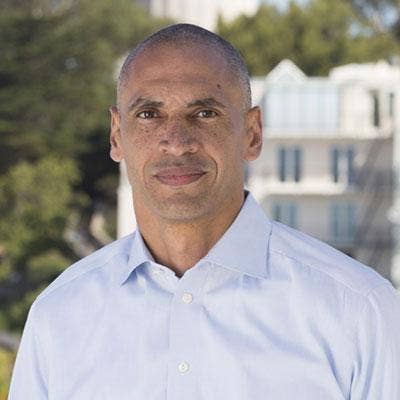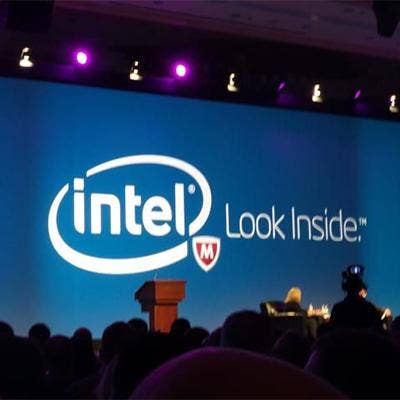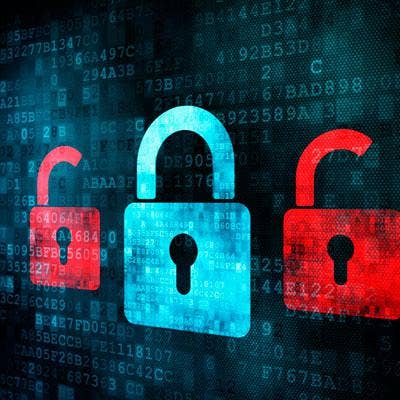Q&A: Future McAfee CEO Chris Young On Intel Spin-Out And Why 'Future Is Bright' For Intel Security And Partners

The 'New McAfee'
With a deal to spin out from parent company Intel, Intel Security aims to be the ’biggest and best cybersecurity player out there,’ leader Chris Young told CRN. Young, currently senior vice president and general manager of Intel Security, will serve as CEO of the company, which will return to the McAfee name when the $4.2 billion spin-out deal to TPG Capital is completed next year. Intel will retain a 49 percent ownership stake in the company, with the remainder owned by TPG. In an interview with CRN, Young said the deal positions the company to invest to win, both against emerging startups and big-name platform security players.
’We’re all very happy with the future opportunities. Our partners are a big part of that future, and we think they are going to be really happy with what they see. … The future is bright,’ Young said.
Take a look at what Young had to say about the company’s future strategy, product road map and what partners can expect to see from the ’new McAfee.’

What will your strategy be as an independent company?
At the highest level, the opportunity for us that we see and that TPG sees as well is to create the biggest and best cybersecurity player out there. We see this opportunity to be a real platform player, but 100 percent focused on cybersecurity and really pure-play in that mission. That’s really the thrust of what we’re trying to do here. …There’s lots of small players, but we consider them features of platforms that we’re delivering. Every partner wants to deal with fewer players and they want more technology providers they can partner with to deliver large-scale solutions and that’s the opportunity really that is out there for us as an independent company. We’re excited about that.
What does being independent from Intel mean for customers and partners in the near term?
In the near term, the positive news for our customers is everything we can do is additive to what they have already bought into, and for our partners as well. We made tough choices in our product portfolio a year ago so we can make investments and go bigger in a couple of key areas around full-scale solutions on the endpoint, our cloud architecture, security analytics, threat intelligence capabilities, all that that we put in motion a year ago. We’ve got major releases coming across the board in all of our product lines. That’s one of the reasons, aside from the new McAfee being a stand-alone company in the next year, I’m also excited that we’re delivering on the promises we made to the marketplace last year. We just had a DLP 10 release, MOVE 4.0, Endpoint 10.2, and we have a whole variety of new releases across SIEM, IPS, our endpoint suite all coming over the next few months and all of which we will showcase in a couple of weeks at Focus. In the short term, our strategy is really, really solid. Our product portfolio is solid and all the things that we’ve been spending time with our partners and customers training them on, educating them around, all of that remains in motion and I think that is really going to be something that everybody is happy with.

What’s the benefit of splitting out from Intel? Why the spin-out?
It creates longer-term opportunities. This is a different company structure, which allows us to do different things. For example, there are probably acquisitions we could make over the long term to augment what we’re doing in our business as an independent company solely focused on cybersecurity that will be more directly in our line of sight. The other thing is, being a focused cybersecurity player requires different decisions to get made on a day-to-day basis in the business around people, around technical choices, budgeting decisions. … The nice thing for us is Intel is very much a participant, a 49 percent owner, a full backer of everything we have been doing and will do in the future, but they are setting us up so we can run fast and be focused after the cybersecurity marketplace in the way our customers and partners need us to do it. Intel is a great company and I think we’re better for having been a part of Intel, but this allows us to continue to collaborate with Intel on work in our product portfolio. Clearly, Intel as a company has a lot of interest in our long -erm success, but this will allow us to be an independent organization, completely focused on cybersecurity at our core.

Where will you stay tied to Intel? What’s the overlap?
We have a variety of different collaborations with Intel, both in our consumer business as well as in our corporate business. As you may know, on the consumer side from a partner perspective all the major OEMs are partners of ours, all of whom have deep ties with intel, and our consumer business is an important partnership for them as well in serving that end customer that we all share. On the corporate side, a lot of integration work around technology, whether it be leveraging Intel Labs and some of the research they’ve done to help us improve our ability to do virtual sandboxing capabilities in our appliances, improve our ability to do malware detection, leveraging different features and functions in our chipsets. We have a variety of different programs where we’re able to collaborate with other parts of Intel to take advantage of the features and capabilities that are available to us.

What’s TPG’s role going to be in all of this? How will you leverage them?
They’re an owner, obviously. They are the controlling owner, but they are not here to run the business. They are here to help us grow and build a great company. That’s their main interest: They want to see us thrive, they want to see us deliver great products, and they want to see us be successful as an organization. What they bring to the table is a legacy of successful company transformation, whether that be taking companies that were public and underperforming and helping them become great-performing companies again or taking companies out of larger organizations and helping them perform well on their own. I think TPG is going to be a great partner in helping us stand ourselves up as an independent organization and become a great company. That’s my goal. I think this industry needs it. This industry needs big, healthy cybersecurity players that don’t force customers to compromise. Customers need us, they need us to be broad and deep in what we provide, and there’s no reason there can’t even be a few of us doing that. I think this company will be the leader in that space.

What’s the vision for the product road map as an independent company?
The most important thing for partners to understand is the product road map we’ve sharing with them at all the partner events this year – we are delivering on that. There’s no change to that road map and timing. We have got literally major new releases across every major part of our product portfolio that have started to happen between August of this year and finish up by December of this year. From a road map perspective and what our partners have to work with to help solve customer problems towards the end of this year and into next year, we are 100 percent heads down to deliver on that. The products they’ve been training on, the technology they’ve been learning about, that they have been preparing to go to market with, where they’ve been participating with us in beta programs, all of that is intact. That’s one of the things that will be really valuable for them.

Where will you be investing in the product portfolio going forward?
As we look forward, we think road map beyond 2016 and into the beginning part of 2017, we are doing some really interesting work around more advanced threat detection and threat management capabilities to augment customer security operations centers, so building on the foundation we already have in our core business today. We will continue to drive more converged cloud-oriented solutions that combine some of the industry’s best threat detection as well as data loss prevention capabilities in a common architecture on-premise and cloud-oriented. … Then, certainly, we continue to invest in the platform architecture that we’ve built on the endpoint, where we’re really converging a lot of technologies. This is an area where there is lot of noise around the endpoint today. As far as I’m concerned, all of those small players constitute what I would consider features of our platform technology and we are subsuming a lot of those features into our portfolio. What we have is an industry-leading management platform in ePO and customers really have the best capability to deploy at large scale across environment, but don’t have to sacrifice any of the efficacy or strong cutting-edge security capabilities that they demand right now.

Can partners expect to see more end-of-life or product sale announcementsgoing forward?
Like I said earlier, we made the hard decisions in our portfolio a year ago. We’ve invested more in the businesses we’re in this year. We’re hundreds of engineers larger today than we were at the beginning of this year, all of whom are plowing their energy into the product portfolio that we’ve got and we’ve been selling this year and that we will go forward selling this year and into next year with our partners. Partners should feel very confident and very good that they will get net new capability, net new technology, better and deeper threat capability across the board going into 2017. I can’t emphasize that point enough: They are getting more going into 2017, not less.

How do you look at the competitive market around the endpoint? Do you see a threat from rising next-generation endpoint security companies like Cylance and others?
We’re still one of the largest players in the space by a long way relative to many of the players that are out there. I’m glad that the small companies are innovating and making a big push, but at the end of the day we’re far and away larger, we have thousands of engineers working on this problem, and venture capital firms and startups aren’t going to solve a problem as complex as this one on their own. Customers need large players that can scale and provide the full breadth and depth of capabilities that they need. There’s room for small players, but there’s also a huge need for players like ourselves to help customers solve their problems holistically, not slice it off in tiny bits and bytes, which make things more complex to manage.

What about competition from companies like Symantec, especially after its acquisition of Blue Coat Systems?
Symantec has been a competitor. Blue Coat has been a competitor. Nothing changes. … They have their work cut out for them.

How will the partner program evolve with the deal and how will you invest in that going forward?
Our partner program has been pretty independent of the rest of Intel. It’s been focused on our security partners, so as a result of this deal there are no anticipated changes to our partner program. That being said, we brought new leaders into our partner program over the past year. They’ve begun rolling out changes to the partner program, which are starting to take effect now and into 2017. We will continue to evolve our partner program to be competitive and effective at helping our partners be successful as we look to the new year. As it relates to this deal, there will be no changes that correspond to what we’re doing here.

From a company side, what will the new leadership team look like and how will you retain employees in the spin-out?
The leadership team remains in place. As you know, we’ve been a full business unit under Intel. We have our own sales organization, channels, marketing, and all the core functions that support our business. The leadership team that we have today is largely going to be in place. Obviously, we will need to add some of functional structure of a stand-alone company, like finance and HR, IT and those things, but the core business functions and core business leaders of those functions are all going to be part of the new organization. Independent companies offer great opportunity for all employees, whether they are newer in careers or higher-level executives. This gives us an opportunity to design programs that will focus our energies around delivering results and reward all of our employees in line with those results. We’ve been delivering great results this year and I fully expect to deliver some great programs where the employees will feel rewarded for the hard work they’ve been doing.

What does the road map look like for the next six months? What can partners expect in that transition?
We’re heads down on delivering our plan. I fully expect to meet or exceed our plan for 2016 and continue to grow through 2017. We’ve had a great year. We’ve grown over 10 percent top-line revenue this year, we’ve been very profitable and more profitable in this business than we have historically. We’re heads down on delivering a bunch of great new product releases in our portfolio. We’re fully focused on that mission. As it relates to standing McAfee up as independent company, there will be teams of people dedicated to that but those will be largely different teams than those who are focused on the business orientation, including delivering product to customers, supporting product, working with partners, etc. Our plans as it relates to running the business are unchanged. We have to deliver a strong 2016. We’ve done that so far and we will carry that momentum into 2017. There’s a lot of attention being paid to make sure we don’t miss a beat going into the future. That’s something our customers and our partners would expect, and it’s something that we’re very, very focused on as we look forward.

Any other messages you’d like to share with partners about the spin-out?
No. 1, I want to thank our partners for what they do every day. They are on the front lines with customers, they are working on very hard problems together with us in many cases, and we’re doing important work. This new company structure is going to allow us, in some cases, to go deeper with our partners on certain cybersecurity solutions. It gives them the confidence that those that are laser-focused on cybersecurity have a big, healthy focused vendor that will be with them for the long term. That’s something I know that’s important to them. I will ask for the same thing from them: that they make the commitment to invest with us because our customers need us today unlike they’ve ever needed us before.
We’re all very happy with the future opportunities. Our partners are a big part of that future, and we think they are going to be really happy with what they see in the next couple of weeks, with all of the great new products we have coming and what this tees us all up to do in 2017 and beyond. The future is bright.